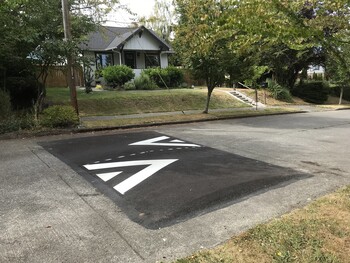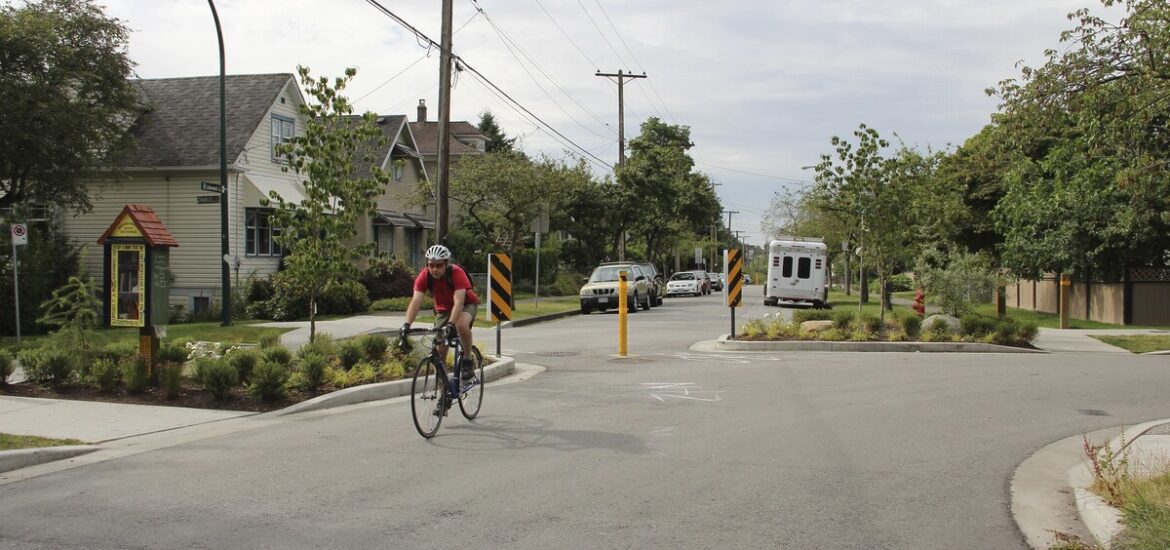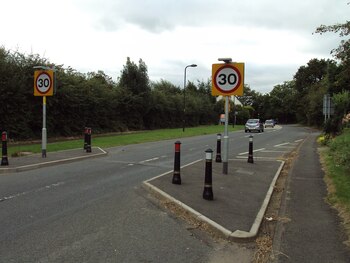In the dynamic landscape of urban planning and road safety, the implementation of effective traffic calming measures stands as a crucial strategy. These measures not only enhance safety for pedestrians and drivers but also contribute to the overall livability of a community. In this comprehensive guide, we will explore the significance of traffic calming, the diverse array of measures employed, and the role of elements such as speed cushions in creating safer and more pedestrian-friendly environments.
Understanding Traffic Calming Measures
Defining Traffic Calming: Traffic calming refers to a set of strategies and physical interventions designed to slow down or regulate vehicular traffic. The primary goal is to create safer and more accessible streets, making them conducive to various modes of transportation and enhancing the overall quality of urban life.
 Key Traffic Calming Measures
Key Traffic Calming Measures
- Speed Humps:
- Purpose: Speed humps are raised sections of the road that compel drivers to reduce their speed.
- Significance: They are effective in slowing down traffic in residential areas, school zones, and other locations where pedestrian safety is a priority.
- Chicanes:
- Purpose: Chicanes are alterations in the road alignment, typically consisting of alternating curves.
- Significance: They introduce a visual and physical element that requires drivers to navigate a winding path, naturally reducing speeds.
- Road Narrowing:
- Purpose: Narrowing the road through measures like curb extensions and road diets.
- Significance: Reduced road width encourages slower driving speeds and improves safety for pedestrians at crossings.
- Roundabouts:
- Purpose: Roundabouts are circular intersections that promote continuous traffic flow without the need for traffic signals.
- Significance: They enhance safety by reducing the severity and frequency of collisions compared to traditional stop-controlled or signalized intersections.
- Raised Crosswalks:
- Purpose: Elevated pedestrian crossings at intersections.
- Significance: Raised crosswalks improve visibility and provide a safer passage for pedestrians, encouraging drivers to be more cautious.
- Speed Cushions: A Closer Look:
- Purpose: Speed cushions are traffic calming devices designed to slow down vehicles by creating a raised platform with multiple sections.
- Significance: They effectively control speed while allowing emergency vehicles and larger vehicles to navigate through without significant disruption.
- Pedestrian Islands:
- Purpose: Raised islands in the middle of the road to provide refuge for pedestrians crossing multi-lane streets.
- Significance: Enhances pedestrian safety by breaking up the crossing distance and improving visibility for both pedestrians and drivers.
Benefits of Traffic Calming Measures
- Enhanced Safety:
- Traffic calming measures significantly reduce the risk and severity of accidents, creating safer road environments for all users.
- Improved Pedestrian Experience:
- Pedestrian-friendly streetscapes, achieved through measures like raised crosswalks and pedestrian islands, contribute to a more pleasant and accessible urban environment.
- Reduced Speeds:
- The primary goal of traffic calming is to reduce vehicle speeds, mitigating the impact of potential accidents and creating a more comfortable coexistence of various modes of transportation.
- Community Livability:
- Traffic calming measures contribute to the overall livability of communities by creating spaces where residents feel safe walking, cycling, and interacting.
- Lower Noise Levels:
- Slower speeds result in reduced noise levels, creating a more peaceful and enjoyable living environment for residents.
Role of Speed Cushions in Traffic Calming
Design and Function:
- Speed cushions are designed with raised sections that span a portion of the roadway, creating a gentle undulation.
- They are strategically placed to encourage drivers to slow down while allowing emergency vehicles, buses, and larger vehicles to navigate over them more easily.
Effectiveness:
- Speed cushions effectively address speeding issues in residential areas, school zones, and areas with a history of high-speed traffic.
- Their design encourages a controlled approach, ensuring that drivers adhere to safer speeds.
Balancing Safety and Accessibility:
- One of the advantages of speed cushions is their ability to balance safety and accessibility. While they deter speeding, they also allow certain vehicles to pass over without causing discomfort or damage.
Considerations in Implementing Traffic Calming Measures
- Community Engagement:
- Successful implementation requires input and support from the community. Engage residents in the decision-making process to address concerns and preferences.
- Data Collection:
- Gather relevant data on traffic patterns, speeds, and accident history to inform the selection of appropriate traffic calming measures.
- Flexibility in Design:
- Consider the unique characteristics of each location when selecting and designing traffic calming measures. A tailored approach ensures effectiveness.
- Monitoring and Evaluation:
- Implement a monitoring and evaluation process to assess the impact of traffic calming measures over time. Adjustments may be needed based on observed outcomes.
- Collaboration with Stakeholders:
- Collaborate with local authorities, transportation agencies, and emergency services to ensure that traffic calming measures align with broader urban planning goals.
Conclusion: Paving the Way to Safer Streets
In conclusion, the implementation of traffic calming measures represents a proactive and effective approach to creating safer and more livable urban environments. From speed humps to chicanes, each measure plays a vital role in achieving the overarching goal of promoting safety, reducing speeds, and enhancing the quality of life for residents.
Speed cushions, as part of this comprehensive toolkit, offer a nuanced solution that balances the need for speed control with considerations for accessibility. When integrated thoughtfully into a broader traffic calming strategy, these measures pave the way to streets that prioritize safety, encourage active transportation, and contribute to the overall well-being of communities. As cities continue to evolve, the incorporation of innovative traffic calming measures remains a key element in fostering sustainable, safe, and vibrant urban spaces.


